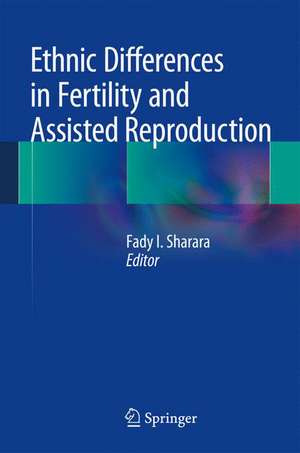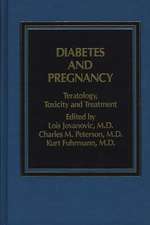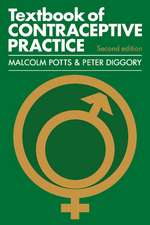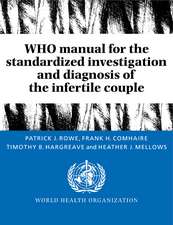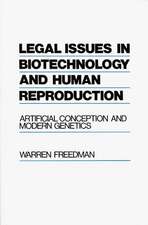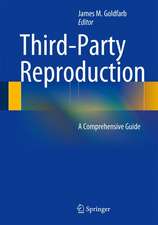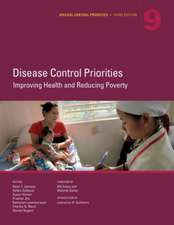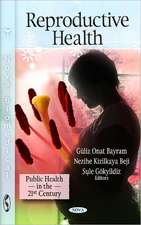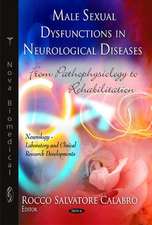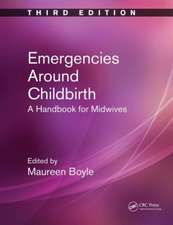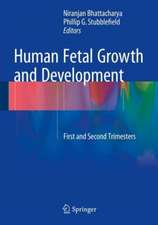Ethnic Differences in Fertility and Assisted Reproduction
Editat de Fady I. Shararaen Limba Engleză Hardback – 17 iul 2013
| Toate formatele și edițiile | Preț | Express |
|---|---|---|
| Paperback (1) | 1029.91 lei 6-8 săpt. | |
| Springer – 8 aug 2015 | 1029.91 lei 6-8 săpt. | |
| Hardback (1) | 719.95 lei 6-8 săpt. | |
| Springer – 17 iul 2013 | 719.95 lei 6-8 săpt. |
Preț: 719.95 lei
Preț vechi: 757.85 lei
-5% Nou
Puncte Express: 1080
Preț estimativ în valută:
137.77€ • 147.32$ • 114.86£
137.77€ • 147.32$ • 114.86£
Carte tipărită la comandă
Livrare economică 17 aprilie-01 mai
Preluare comenzi: 021 569.72.76
Specificații
ISBN-13: 9781461475477
ISBN-10: 1461475473
Pagini: 272
Ilustrații: XIV, 255 p.
Dimensiuni: 155 x 235 x 19 mm
Greutate: 0.52 kg
Ediția:2013
Editura: Springer
Colecția Springer
Locul publicării:New York, NY, United States
ISBN-10: 1461475473
Pagini: 272
Ilustrații: XIV, 255 p.
Dimensiuni: 155 x 235 x 19 mm
Greutate: 0.52 kg
Ediția:2013
Editura: Springer
Colecția Springer
Locul publicării:New York, NY, United States
Public țintă
Professional/practitionerCuprins
Introduction: the scope of the topic.- Racial and ethnic groups of interest in fertility research.- The impact of socio-cultural and economic factors in seeking fertility services.- Fertility differences among ethnic groups.- Disparities between Black and White women in Assisted Reproductve Technology (ART).- Assisted reproductive outcomes in Hispanics.- Reproductive and ART outcomes in East Asian women.- Differences in fertility and assisted reproduction in South Asian women.- Ethnicity and IVF.- Ethnic disparity in oocyte donation outcome.- Frozen embryo transfer (FET) outcomes among racial and ethnic groups.- Understanding racial disparity in adverse pregnancy outcome.- Racial diversity and uterine leiomyoma.- The effect of obesity on fertility and ART success among ethnic groups.- Polycystic ovary syndrome (PCOS) across racial and ethnic groups.- Ethnicity and ovarian response: the role of FSH receptor genotype.- Ethnic differences in fertility and assisted reproduction: ethnic disparity in stem cell availability and research.- How can we bridge the gap? Role of insurance mandate.- Editorial: Towards a better understanding of racial disparities in utilization and outcomes of IVF treatment in the United States.
Notă biografică
Fady Sharara, M.D. is Clinical Professor at George Washington University, Dept of OB/GYN and the Medical Director of the Virginia Center for Reproductive Medicine. Dr. Sharara has authored more than 80 peer-reviewed papers and book chapters. His clinical research includes racial disparities in IVF outcome, prevention of ovarian hyperstimulation syndrome, ovarian stimulation protocols, ovarian reserve testing, and the role of Vitamin D in reproduction, among others.
Textul de pe ultima copertă
Over the past 10 years, studies have shown that the rates of fertility vary in different ethnic groups. Ethnic differences also play a significant role in the outcome of—and access to—assisted reproductive technology. In the United States, minority groups--African Americans, Hispanics (mainly Mexicans and Central Americans), East Asians (Chinese, Japanese, Koreans, Filipinos) and South Asians (Indians, Pakistanis, and Bengalis)--have significantly lower chances of live births compared to Caucasian women. Birth outcome data collected by the Society for Assisted Reproductive Technology shows a worsening trend in conception rates between the years 1999-2000 and 2004-2006, raising more concern that the disparity in fertility rates between minority groups and white women is widening over time. Ethnic Differences in Fertility and Assisted Reproduction serves to answer the questions that arise when managing infertility in a multi-ethnic population. An expert assembly of key leaders in the field of Reproductive Medicine imparts insight and clinical experience in order to identify and analyze the possible causes of racial disparities in fertility outcome. Some of the reviewed causes include higher Body Mass Index (BMI), tubal diseases, metabolic syndrome, and fibroids in African Americans; tubal disease and higher early pregnancy loss in Hispanics; higher incidence of diminished ovarian reserve and lower BMI in East Asians; and higher incidence of polycystic ovarian disease (PCOS) in South Asians. A thoughtful combination of evidence-based medicine and advanced treatment options, this book is sure to distinguish itself as the definitive reference on ethnic differences in assisted reproduction.
Caracteristici
Reviews the current state of ethnic differences in ART and sheds light on the contributing factors for the discrepancy Addresses medical, socio-economic, behavioral, and cultural differences that physicians should keep in mind when treating infertility in the women of minority groups Intended for the assisted reproductive communities throughout the world, including reproductive endocrinologists, gynecologists, epidemiologists, social workers, women’s care providers, and stem cell researchers
